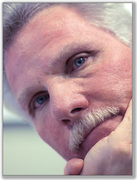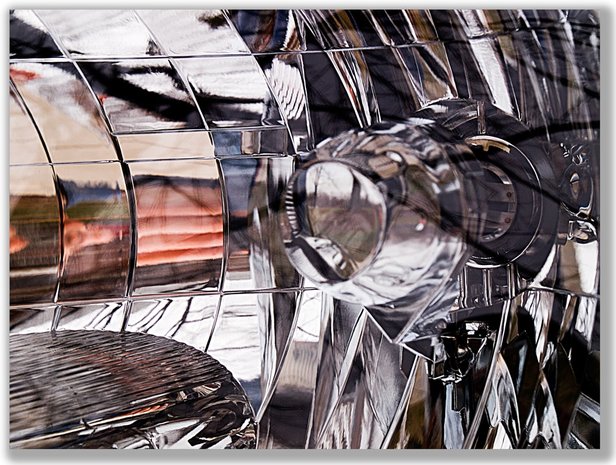 Introspection Introspection Chris Fedderson — MacroFine Musings ~~~~~~~~~~~~~~~~~~~~~~~~~~~~~~~~~~ "It is not because things are difficult that we do not dare, it is because we do not dare that they are difficult." — Lucius Annaeus Seneca I’ve written in the past about experimenting and expanding your photographic style(s), either as a self-discovery process or simply for the fun of it (Where Does Your Brain Go? 8-9-2016). Well, I recently put my money where my mouth is with a submission to an exhibition of an image completely different from my usual — and even my not so usual — imagery. I strayed away from Nature to experiment with the mechanical/industrial side of life. I was walking around Old Town Alexandria, VA — founded 300-ish years ago — where many of the old buildings have elaborate stonework and intricate wrought iron fence and gate details. There is a marina there, too, rife with ropes and riggings and fabrics and peeling paint. And, of course, among all this city stuff, there were also modern mechanical/industrial elements; bicycle racks, street lights, modern architecture, and cars with shiny bumpers and space age-looking headlights. This is where I found my image. In looking closely at the detail of all the reflective surfaces within a headlight fixture, I saw my reflection. I wondered which of the many different points of view I saw was the “right” one? If each one represented a separate interpretation of me, then which one was most correct? Were they all correct in their own ways? Was any one of them really correct; or were they all skewed to some degree? Introspection was born. The rest of the images I shot that day were also interesting. Some showing a way of life long past. Some showing newer technologies. But to me, compared to Introspection, they were all just catalog shots. Just recordings of what I had seen. They didn’t really have much to say. No “reason for being”. No “hook”. So I learned a little something that day. By stepping outside of my box and leaving my comfort zone, I got a glimpse of me reflected in a subject I would have said I had zero affinity for. A glimpse both literal and metaphorical… Thank You for visiting, — Chris P.s. What have you tried lately that pushed your boundaries? Either photographic or otherwise. Try a new ethnic food? Go see a “weird” movie? Jump out of a plane? Let’s hear about it!
3 Comments
Chris Fedderson — MacroFine Musings ~~~~~~~~~~~~~~~~~~~~~~~~~~~~~~~~~~ “That which does not kill us, makes us stronger.” — Friedrich Nietzsche Hello, again, Everyone. Miss me? ;-) I’ve missed you; I’ve missed writing these blog posts. I’ve missed your comments. The short story is that I have had some medical things that have taken all my attention and prevented me from keeping up with MacroFine Musings. We have a diagnosis and a plan of attack now, so things are almost back to normal. A bit of good news associated with this whole shebang is that now that I’ve had every medical test known to modern science, I now know that everything else is running smoothly! Yea!! And some other Good News over the winter… I was honored to have élan magazine ask to interview me about my photographic vision and insights. The article published in the January issue (page 30). I’m very happy with the write-up and they did a super job presenting a few of my images, too. Speaking of photographic vision and insights, What’s yours? I touched on this a bit in my post, “Where Does Your Brain Go?” from August 9, 2016. With painters, we see and recognize a wide range of visions, insights, styles; it’s expected after all. It’s all a made-up, invented representation of reality as translated from the painter’s mind’s eye — and I mean that in the most complimentary way possible. But, as contrasted with the process of photography, which when taken in its most over-simplified analysis, is just using a tool to capture a copy of what is standing right there in front of you.
Aaahhhh, but there’s the rub! Even when trying to capture a literal reproduction, the camera will not deliver exactly what you see in your mind’s eye. The camera will not automatically even out the light and shadow. It will not take the initiative to adjust your depth of field. It won’t necessarily stop action or allow something to zoom by. All these details — and a bazillion more — are up to you. This is where you engineer how the camera is going to “paint” what you are seeing in your mind. So, what are you seeing? Do you know already, or are you still searching for your voice? Either way, continue to experiment with all sorts of photographic “feelings”. Try shooting, and capturing, every kind of emotion you can think of; happy, gloomy, somber, festive, remorseful, thankful, pensive… Need a few suggestions? Not into heady, emotional imagery? That’s fine. You can still experiment with all sorts of photographic styles and subject matter. As I wrote in “Best First Camera For My Teen?” (12-8-2015): “Try shooting architecture, portraits, animals, plants, textures, mechanical, food, bugs, stars, fireworks, motion, sports, landscapes, pets, close-up, far-away, cityscapes, countrysides, still lifes, studio set-ups, storms, clouds… and yes, even Selfies; there is something to be learned from every shot taken. Soon you’ll start to discover a photographic preference developing.” Wishing you happy shooting and amazing discoveries! Thank You for visiting, — Chris P.s. Thank you, again, for your patience with me and my absence this winter. I hope now things will return to normal and posts will be more regular. . . . And Happy Valentine's Day to All! Chris Fedderson — MacroFine Musings ~~~~~~~~~~~~~~~~~~~~~~~~~~~~~~~~~~ I have recently begun to experiment with Contemporary Still Life set-ups and will be showing these in my upcoming solo featured artist show, Curious Pairings. I thought you might like a behind the scenes look at how the process for setting up a still life works, with all the things that you have to prepare and consider. So here it is — your “Backstage Pass” to see the inner workings of how the process evolves. This is my photo studio where I do my set-ups — not too glamorous, I know! The main thing for me is the lighting in this room (3rd floor, Southwest facing). It also helps to have two tables that I can easily adjust in height or move around as needed for set-ups. This set-up started with the concept of a Rose being created with hardware and tools and the juxtaposition that would create. I started with Diamond Cut Metal for the backdrop to set the tone. Then I collected a bunch of nuts and bolts, small hand tools, and other hardware-related stuff, for my set dressing. Next I began just scooting elements around to see how they worked together and whether my concept was being portrayed in the result. Here are some of the major considerations/decisions you need to make for a set-up to create your very own Contemporary Still Life.
Wow — it’s crazy what you go through to create these sorts of images. After seeing the mess that led to it, you’ll be surprised how this ended up looking. And now… drumroll please… since you have a backstage pass you get to see the final image! Here you go! Is it anything at all like what you thought it would be?
Thank you for visiting and share your backstage pass with others, — Chris P. s. Have you ever tried to do a set-up in your studio? Share the experience! Chris Fedderson — MacroFine Musings ~~~~~~~~~~~~~~~~~~~~~~~~~~~~~~~~~~ One of the things I routinely like to photograph is tree bark. It offers such variety in texture, color, and scale. Bark is ever-changing and you can capture really great images all year long, in all kinds of weather conditions. There so much variety in bark — the peeling, the cracking, the swirling patterns, smooth and rough patches, intersecting veins, and the amazing colors when the light hits it just right. I have a favorite tree that I found one year while hiking in Mason Neck State Park in Virginia. I have been revisiting this same tree for several years now.
The tree was a dual-trunked specimen and it split in two, with each half falling in opposite directions. It has been amazing to revisit this tree to view the changes, the decomposition, the fungus, and the new weathering bark and wood patterns that have developed. Now, several years later, I’m still finding new, intriguing sections to photograph. Since I always shoot macro and close-up images, another great advantage to photographing bark is that you can shoot in any wind conditions. Unheard of for macro! (If that bark is waving in the wind then you’ve got bigger problems than just getting a great shot!) Here are a few tips and things for you to try when photographing bark.
Speaking of all things bark — this month at the Workhouse Art Center you can see my un-official showing All About the Bark. I have images of: Chinese Elm, River Birch, Royal Palm, the afore-mentioned fallen tree, and more. Hope you drop by for a visit, now through October 2nd. Thank You for visiting, — Chris P.s. What’s your favorite subject matter? Why do you find this subject to be so interesting? What difficulties to shooting does it present? Share with us, we’d love to hear about your experiences. |
Categories
All
About Chris
I am a Virginia-based photographer and gather my images while hiking in parks and natural areas here at home and in the locations I travel to. I also love to visit arboretums and botanic gardens to find unusual and exotic subjects. Archives
March 2017
|
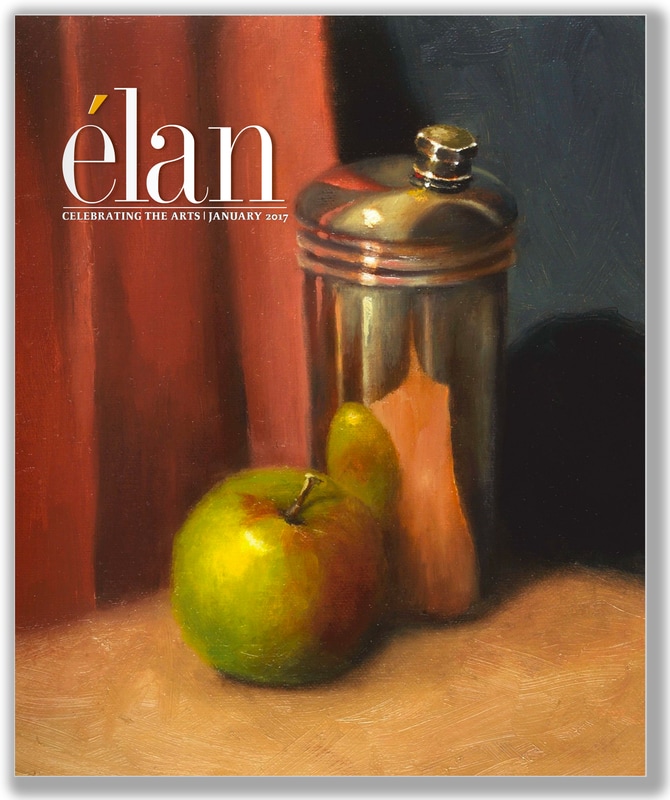
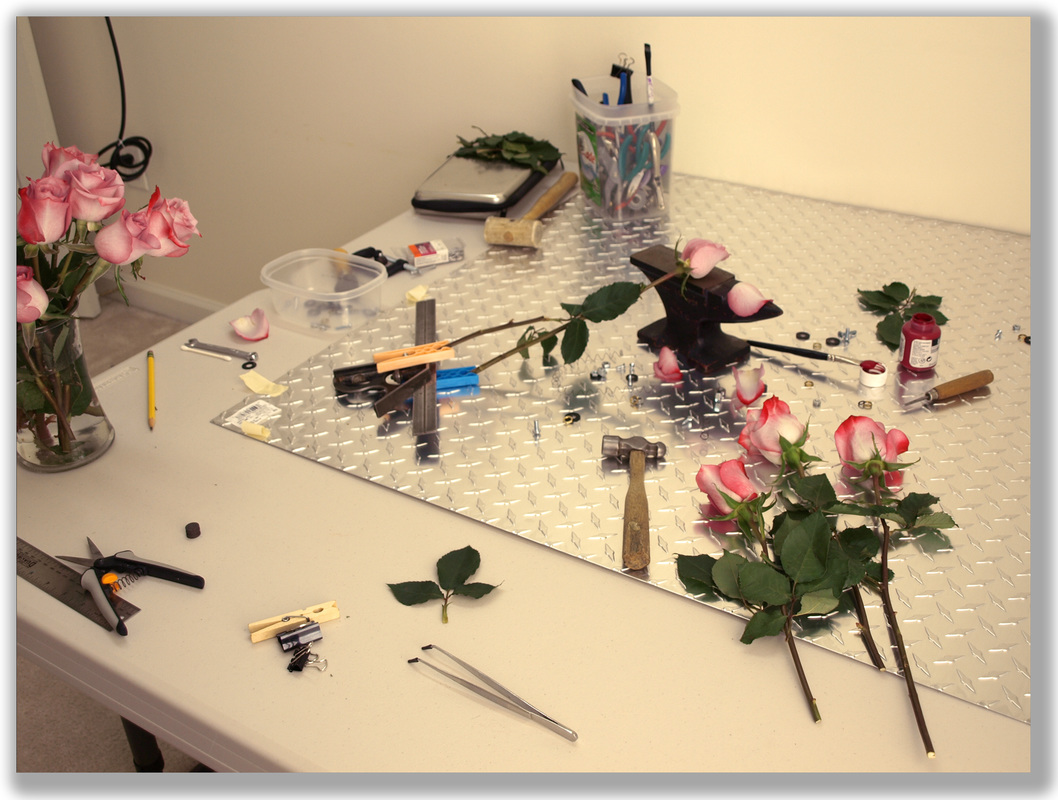
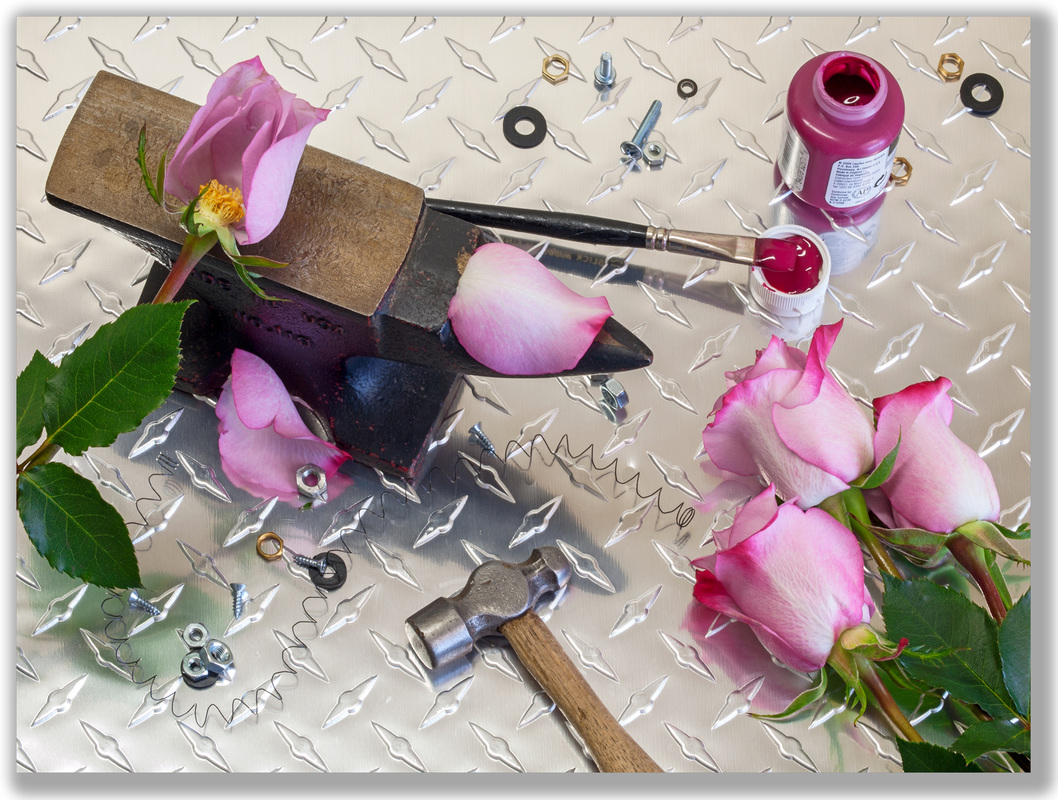
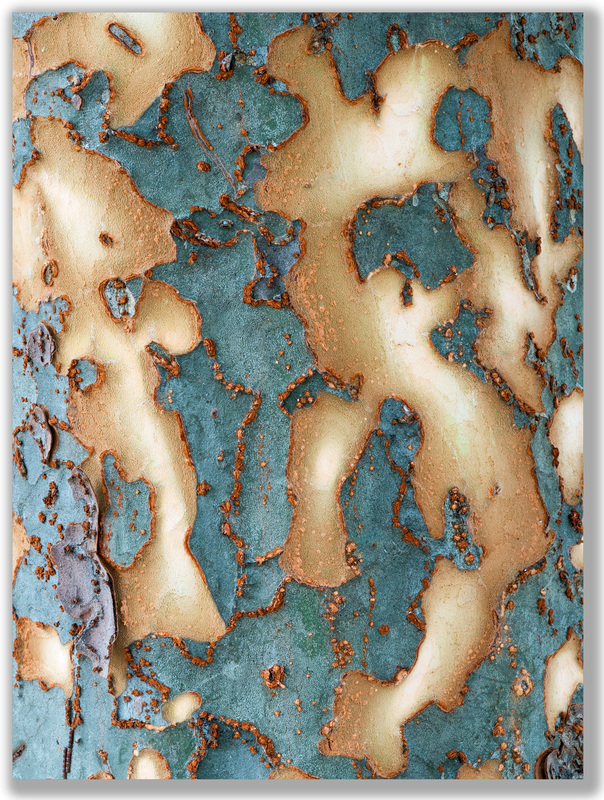
 RSS Feed
RSS Feed
